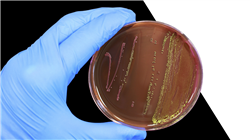University certificate
The world's largest faculty of pharmacy”
Introduction to the Program
Thanks to this 100% online Postgraduate diploma, you will gain advanced knowledge about the causes and mechanisms of bacterial resistance, both in humans and animals, applying them in your daily practice"

Multidrug-Resistant Bacteria have complicated the treatment of infections in both humans and animals. This phenomenon has intensified due to the excessive and inappropriate use of antibiotics in medicine and agriculture, as well as the transmission of resistance genes between different bacterial species. Therefore, the emergence of these bacteria has driven the urgent need to develop new therapeutic and management strategies.
This is how this Postgraduate diploma is born, which will address bacterial resistance in human pathology, deeply analyzing the causes that promote it. It will also examine, from the scarcity of new antibiotics, to socioeconomic factors and health policies that influence its development and spread. In addition, the current global situation of antibiotic resistance will be analyzed, with emphasis on statistics and regional trends.
The study plan will also focus on antimicrobial resistance in animal health, exploring the causes and mechanisms behind bacterial resistance in the veterinary field. It will also identify the most relevant multidrug-resistant bacterial species and evaluate their impact on animal health, introducing preventive and control measures to mitigate bacterial resistance in animals, including the adequate management of antibiotics and viable alternatives in livestock and aquaculture.
Finally, the agenda will focus on Multidrug-Resistant Bacteria in the food chain, analyzing the crucial role it plays in the spread of antibiotic resistance. In this way, the risks associated with food of animal and plant origin, as well as water, as vectors for the transmission of resistant bacteria will be explored.
These comprehensive resources will offer graduates a fully online methodology, allowing them to organize their study schedule according to their personal and work commitments. In addition, the advanced Relearning system will be implemented, which facilitates deep understanding of key concepts through strategic repetition. In this way, they will be able to learn at their own pace and fully master the latest scientific evidence available.
You will expand your role as a pharmacist beyond dispensing medications, becoming a key player in early disease detection and health promotion"
This Postgraduate diploma in Multidrug-Resistant Bacteria in Human Microbiology and Animal Health contains the most complete and up-to-date scientific program on the market. The most important features include:
- The development of practical cases presented by experts in Microbiology, Medicine and Parasitology
- The graphic, schematic and eminently practical contents with which it is conceived gather scientific and practical information on those disciplines that are indispensable for professional practice
- Practical exercises where self-assessment can be used to improve learning.
- Its special emphasis on innovative methodologies
- Theoretical lessons, questions to the expert, debate forums on controversial topics, and individual reflection assignments
- Content that is accessible from any fixed or portable device with an Internet connection
You will gain an in-depth understanding of how the food chain contributes to the spread and persistence of bacterial resistance, driving the need for effective management and control measures"
The program’s teaching staff includes professionals from the industry who contribute their work experience to this program, as well as renowned specialists from leading societies and prestigious universities.
The multimedia content, developed with the latest educational technology, will provide the professional with situated and contextual learning, i.e., a simulated environment that will provide immersive education programmed to learn in real situations.
This program is designed around Problem-Based Learning, whereby the professional must try to solve the different professional practice situations that arise during the course. For this purpose, students will be assisted by an innovative interactive video system created by renowned and experienced experts.

Bet on TECH! You will delve into the importance of the One Health strategy to integrate efforts in proper antibiotic management and viable alternatives for livestock and aquaculture, in a global approach"
Why study at TECH?
TECH is the world’s largest online university. With an impressive catalog of more than 14,000 university programs available in 11 languages, it is positioned as a leader in employability, with a 99% job placement rate. In addition, it relies on an enormous faculty of more than 6,000 professors of the highest international renown.

Study at the world's largest online university and guarantee your professional success. The future starts at TECH”
The world’s best online university according to FORBES
The prestigious Forbes magazine, specialized in business and finance, has highlighted TECH as “the world's best online university” This is what they have recently stated in an article in their digital edition in which they echo the success story of this institution, “thanks to the academic offer it provides, the selection of its teaching staff, and an innovative learning method aimed at educating the professionals of the future”
A revolutionary study method, a cutting-edge faculty and a practical focus: the key to TECH's success.
The most complete study plans on the university scene
TECH offers the most complete study plans on the university scene, with syllabuses that cover fundamental concepts and, at the same time, the main scientific advances in their specific scientific areas. In addition, these programs are continuously being updated to guarantee students the academic vanguard and the most in-demand professional skills. In this way, the university's qualifications provide its graduates with a significant advantage to propel their careers to success.
TECH offers the most comprehensive and intensive study plans on the current university scene.
A world-class teaching staff
TECH's teaching staff is made up of more than 6,000 professors with the highest international recognition. Professors, researchers and top executives of multinational companies, including Isaiah Covington, performance coach of the Boston Celtics; Magda Romanska, principal investigator at Harvard MetaLAB; Ignacio Wistumba, chairman of the department of translational molecular pathology at MD Anderson Cancer Center; and D.W. Pine, creative director of TIME magazine, among others.
Internationally renowned experts, specialized in different branches of Health, Technology, Communication and Business, form part of the TECH faculty.
A unique learning method
TECH is the first university to use Relearning in all its programs. It is the best online learning methodology, accredited with international teaching quality certifications, provided by prestigious educational agencies. In addition, this disruptive educational model is complemented with the “Case Method”, thereby setting up a unique online teaching strategy. Innovative teaching resources are also implemented, including detailed videos, infographics and interactive summaries.
TECH combines Relearning and the Case Method in all its university programs to guarantee excellent theoretical and practical learning, studying whenever and wherever you want.
The world's largest online university
TECH is the world’s largest online university. We are the largest educational institution, with the best and widest online educational catalog, one hundred percent online and covering the vast majority of areas of knowledge. We offer a large selection of our own degrees and accredited online undergraduate and postgraduate degrees. In total, more than 14,000 university degrees, in eleven different languages, make us the largest educational largest in the world.
TECH has the world's most extensive catalog of academic and official programs, available in more than 11 languages.
Google Premier Partner
The American technology giant has awarded TECH the Google Google Premier Partner badge. This award, which is only available to 3% of the world's companies, highlights the efficient, flexible and tailored experience that this university provides to students. The recognition as a Google Premier Partner not only accredits the maximum rigor, performance and investment in TECH's digital infrastructures, but also places this university as one of the world's leading technology companies.
Google has positioned TECH in the top 3% of the world's most important technology companies by awarding it its Google Premier Partner badge.
The official online university of the NBA
TECH is the official online university of the NBA. Thanks to our agreement with the biggest league in basketball, we offer our students exclusive university programs, as well as a wide variety of educational resources focused on the business of the league and other areas of the sports industry. Each program is made up of a uniquely designed syllabus and features exceptional guest hosts: professionals with a distinguished sports background who will offer their expertise on the most relevant topics.
TECH has been selected by the NBA, the world's top basketball league, as its official online university.
The top-rated university by its students
Students have positioned TECH as the world's top-rated university on the main review websites, with a highest rating of 4.9 out of 5, obtained from more than 1,000 reviews. These results consolidate TECH as the benchmark university institution at an international level, reflecting the excellence and positive impact of its educational model.” reflecting the excellence and positive impact of its educational model.”
TECH is the world’s top-rated university by its students.
Leaders in employability
TECH has managed to become the leading university in employability. 99% of its students obtain jobs in the academic field they have studied, within one year of completing any of the university's programs. A similar number achieve immediate career enhancement. All this thanks to a study methodology that bases its effectiveness on the acquisition of practical skills, which are absolutely necessary for professional development.
99% of TECH graduates find a job within a year of completing their studies.
Postgraduate Diploma in Multidrug-Resistant Bacteria in Human Microbiology and Animal Health
At TECH Global University, we offer the Postgraduate Diploma in Multidrug-Resistant Bacteria in Human Microbiology and Animal Health, designed for health professionals interested in deepening their knowledge in this crucial field. These online classes combine rigorous theory with practical applications, providing comprehensive and up-to-date specialization without the need for physical travel. Multidrug-resistant bacteria represent a significant challenge in both human microbiology and animal health. This course addresses the fundamental aspects of bacterial resistance, exploring state-of-the-art diagnostic and therapeutic strategies. Participants will learn to identify and manage these bacterial strains in different clinical settings, thus improving their ability to provide effective and safe patient care. The program content is structured into modules covering everything from the molecular mechanisms of bacterial resistance to epidemiological and public health implications. Students will have access to state-of-the-art educational resources and will be guided by microbiology experts with extensive academic and professional experience.
Get your degree in the best School of Pharmacy
Do you know why TECH is considered one of the best universities in the world? Because we have a catalog of more than ten thousand academic programs, presence in multiple countries, innovative methodologies, unique academic technology and a highly qualified teaching team; that's why you can't miss the opportunity to study with us. Upon completion of this course, graduates will be prepared to face emerging challenges related to multidrug-resistant bacteria, contributing to the advancement of clinical microbiology and animal health. In addition, they will receive an internationally recognized certificate that validates their skills and knowledge acquired in this specialized field. Take advantage of the opportunity to advance your career with our Postgraduate Diploma in Multidrug-Resistant Bacteria in Human Microbiology and Animal Health. Join the TECH School of Pharmacy and acquire the skills you need to excel in an increasingly complex and dynamic healthcare environment.







